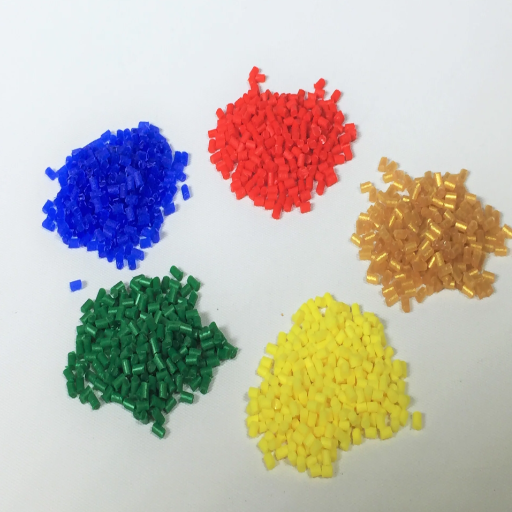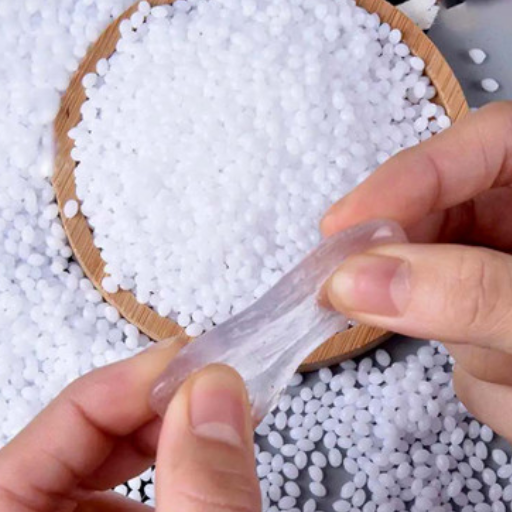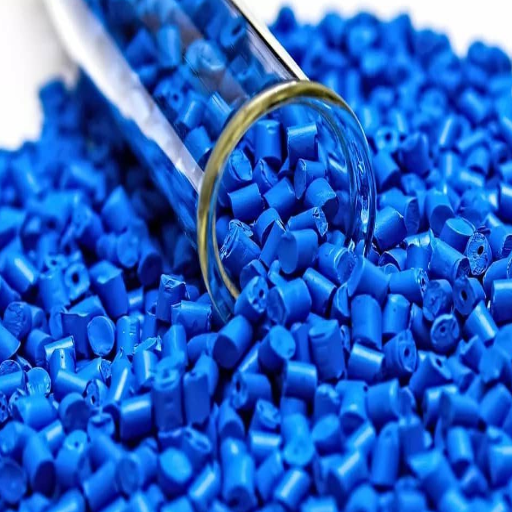Plastic is crucial to contemporary life, being fundamental to several industries such as packaging, construction, electronics, and healthcare. However, not all types of plastics are made the same, as they have been categorized based on their traits, uses, and ease of recycling. It is vital to comprehend these distinctions to make informed choices concerning sustainability and consumption.
This article aims to help readers not only identify these assets but also to familiarize themselves with their influence in the modern world and how optimal use management can result in sustainable practices by detailing the seven most popular plastics and their properties, applications, and waste outlook.
What are the main types of plastic used in everyday products?
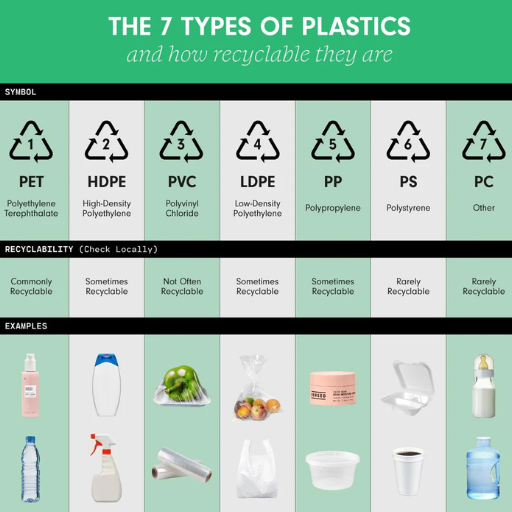
There are seven main types of plastic commonly used in everyday products:
Polyethylene Terephthalate (PET or PETE): Found in water bottles, soda bottles, and food containers. PET is lightweight, durable, and widely recyclable.
High-Density Polyethylene (HDPE): Commonly used in milk jugs, detergent bottles, and plastic bags. It is strong, resistant to moisture, and highly recyclable.
Polyvinyl Chloride (PVC): Used for pipes, vinyl flooring, and shrink wrap. PVC is tough but less frequently recycled due to its chemical composition.
Low-Density Polyethylene (LDPE): Found in grocery bags, cling film, and squeezable bottles. LDPE is flexible and less commonly recycled.
Polypropylene (PP): Used in yogurt containers, bottle caps, and straws. PP is heat-resistant and recyclable in some areas.
Polystyrene (PS): Found in disposable cups, food packaging, and insulation. PS is lightweight but challenging to recycle and often ends up as waste.
Other (Miscellaneous): Includes plastics like polycarbonate and bioplastics, used in eyeglasses, DVDs, and medical devices. Recyclability varies greatly within this category.
Understanding these types helps in identifying opportunities for recycling and reducing plastic waste.
The 7 types of plastic and their common uses
The 7 types of plastic each serve distinct purposes and have varying impacts on the environment. Below is a concise overview of their common uses and recyclability:
Polyethylene Terephthalate (PET or PETE): Frequently used in beverage bottles, food containers, and packaging films. PET is highly recyclable and typically repurposed into textiles, new containers, and carpeting.
High-Density Polyethylene (HDPE): Found in milk jugs, shampoo bottles, and cleaning product containers, HDPE is sturdy and also widely recycled into products like piping, plastic lumber, and new bottles.
Polyvinyl Chloride (PVC): Known for its versatility, PVC is used in plumbing pipes, cable insulation, and medical tubing. Recycling is limited due to its chlorine content, but in some cases, it can be processed into flooring and industrial materials.
Low-Density Polyethylene (LDPE): Used in plastic bags, squeezable bottles, and wraps, LDPE is less commonly recycled, but some programs repurpose it into garbage can liners and similar items.
Polypropylene (PP): Found in food containers, bottle caps, straws, and automotive parts, PP is durable and increasingly being recycled into fibers, containers, and industrial products.
Polystyrene (PS): Commonly seen in disposable cups, takeout containers, and insulation materials. PS is challenging to recycle but can sometimes be used to make insulation boards and packaging filler.
Other (Miscellaneous): This category includes polycarbonate, bioplastics, and other specialized plastics used in applications like electronics, medical devices, and safety glasses. Recyclability depends heavily on the specific material.
Each plastic type plays a crucial role in modern life, but understanding their recyclability can help reduce waste and promote sustainable practices. Knowing the differences ensures better sorting and smarter consumer choices.
How to identify different plastic types
Identifying plastic types is essential for proper sorting and recycling. Most plastic products are labeled with a Resin Identification Code (RIC), a small number (1–7) within a triangle of arrows, typically found on the bottom of the product. Here’s how to interpret these codes:
PET or PETE (1 – Polyethylene Terephthalate): Common in water bottles and food packaging. It is clear, lightweight, and often recyclable through curbside programs.
HDPE (2 – High-Density Polyethylene): Found in milk jugs, detergent bottles, and similar sturdy containers. It is opaque and widely accepted in recycling facilities.
PVC (3 – Polyvinyl Chloride): Used in pipes, shrink wrap, and some food packaging. Not typically recyclable through curbside programs due to its chemical composition.
LDPE (4 – Low-Density Polyethylene): Used in plastic bags, squeezable bottles, and some wrapping films. While flexible, it often requires specialized drop-off locations for recycling.
PP (5 – Polypropylene): Found in yogurt containers, bottle caps, and straws. It has a high melting point and is increasingly accepted by recyclers.
PS (6 – Polystyrene): Commonly known as Styrofoam, used for disposable cups, plates, and packaging materials. It is difficult to recycle due to its lightweight and brittle nature.
Other (7 – Miscellaneous): Includes polycarbonate, bioplastics, and other specialized plastics. Recyclability varies greatly and usually depends on local facilities.
By familiarizing yourself with these codes and the materials they represent, you can make informed choices about proper disposal or recycling, ultimately reducing your environmental footprint. Many communities offer resources or guides to help residents sort plastics more effectively, so always check local recycling guidelines.
Which plastic types are most commonly used in packaging?
The main categories of plastic used for packaging include:
Polyethylene Terephthalate (PET or PETE)- Used for beverage bottles and jars, as well as food containers, PET is a lightweight and strong thermoplastic that is one of the most recyclable plastic types. It is ideal for sealing off the freshness of a product while also providing a clear view of the contents.
High-Density Polyethylene (HDPE)- It is a durable and versatile plastic widely used in making milk jugs, grocery bags, and detergent containers. HDPE is waterproof and chemical resistant which makes it versatile for many areas of packaging.
Polypropylene (PP)- Often used for yogurt cups, bottle caps, and takeaway containers, PP’s flexiblility and resistance to heat make it convenient. Because it is sturdy, able to withstand higher temperatures, and often used for food and non-food items, it is a leading choice in packaging.
These materials are leaders in the industry because they are practical, cost-effective, and reliable in protecting and preserving goods. These materials are leaders in the industry because they are practical, cost-effective, and persuasive in protecting and preserving goods.
How do different types of plastic impact recycling efforts?
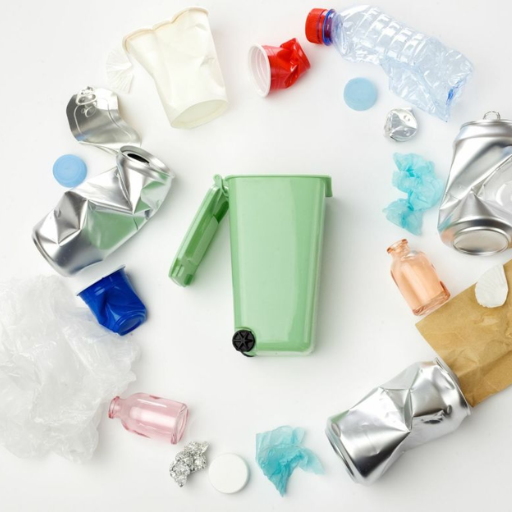
Plastic type differences can deeply affect the processes and capabilities associated with recycling due to the varying composition and recyclability of each type of plastic. For example, PET and HDPE are popularly accepted in most rehabilitation programs because they are easily processed and can be repurposed into new products like textiles or containers. On the contrary, some plastics such as PVC and polystyrene are more complex in terms of recycling because of their intricate chemistry and the demand for materials that have been recycled is low. Additionally, mixed or contaminated plastics that need to be dealt with can complicate recycling processes since the technology required to separate these different types of plastics is not commonly available. Following local guidelines, it becomes evident that sorting different types of plastics into their respective categories greatly enhances the efficiency of the recycling process.
Recyclable vs. non-recyclable plastic types
Types of Recyclable Plastics
Examples of recyclable plastics comprise PET (polyethylene terephthalate) that is used in water bottles and food containers, and HDPE (high-density polyethylene) used in milk and detergent bottles. The availability of recycling programs and a robust market demand for the secondary raw materials makes these plastics easy to obtain and process. In many regions, LDPE (low-density polyethylene) in shopping bags, as well as PP (polypropylene) in yogurt containers, are considered recyclable, although their acceptance depends on local recycling infrastructure.
Types of Non-Recyclable Plastics
Polystyrene or Styrofoam, some types of multi-layer or laminated plastics like chip bags or juice cartons, and PVC (polyvinyl chloride) make generally non-recyclable plastics. The chemical makeup of these materials, contamination concerns, or the lack of economic incentive renders their recycled form as devoid of value, makes them too often overlooked in recycling streams. It is clear that lowering the use of non-recyclable plastics can make a distinctive difference toward sustainability.
The challenges of recycling certain plastic materials
Recycling certain plastic materials poses significant challenges due to a range of factors. Firstly, the chemical complexity of certain plastics, such as multi-layered materials like chip bags, makes separating and processing them highly inefficient. Secondly, contamination from food residues or other waste can render recyclable plastics unusable, as cleaning these materials can be expensive and impractical. Additionally, the lack of adequate recycling infrastructure in many regions means that less common plastics, like Styrofoam or PVC, are not accepted by most recycling facilities. Economic factors also play a crucial role; some plastics have low market value as recycled materials, making them less attractive for sorting and reprocessing. Addressing these issues requires investment in advanced recycling technologies, improved waste sorting practices, and global efforts to reduce reliance on hard-to-recycle plastics.
Innovative solutions for plastic waste management
The development of chemical recycling is but one example of advanced recycling technologies that has the potential to help mitigate plastic pollution—which is rapidly becoming an environmental crisis—by breaking down plastics into their molecular makeup from which new, high-quality materials can be built. Further, there is movement toward using biodegradable or compostable plastics that mitigate harm by breaking down under certain conditions, thus, reducing waste buildup. Furthermore, the shift toward new product designs focusing on reusability, such as refillable containers or modular packaging, can greatly reduce single-use plastic consumption.
Policies and initiatives by public and private actors are key in fostering these strides. The adoption of more sustainable alternatives to single-use plastic items is encouraged by regulations, such as bans and incentives. At the same time, businesses are more actively transitioning toward circular economy models that drastically reduce waste by keeping materials in use for as long as possible through recycling, repurposing, or return programs.
The most effective management of plastic waste requires public awareness campaigns and community initiatives like plastic collection drives and upcycling programs. Education and participation of the public helps make proactive steps towards sustainability—from solving the intricacies of plastic waste to building a more sustainable ecosystem. Integrating all of these angles helps create a more comprehensive solution to plastic waste and building a better environment.
What are the environmental concerns associated with different plastic types?
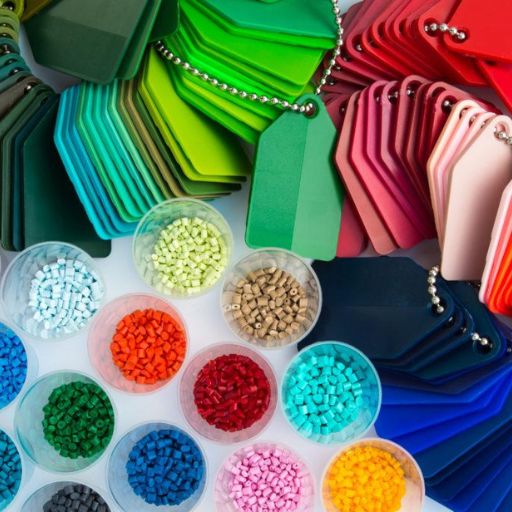
Different types of plastics pose various environmental challenges due to their composition and degradation rates. Single-use plastics, such as polyethylene and polystyrene, are notorious for their longevity in the environment and their tendency to break down into harmful microplastics, which contaminate ecosystems and enter food chains. Polyvinyl chloride (PVC) releases toxic chemicals like dioxins during production and disposal, severely impacting air and water quality. Meanwhile, plastics like polyethylene terephthalate (PET) are recyclable but often end up in landfills or oceans due to insufficient recycling infrastructure, exacerbating pollution. Each plastic type requires specific strategies to mitigate its environmental impact effectively.
Plastic pollution and its effects on ecosystems
To address plastic pollution and its impacts on ecosystems, a multifaceted approach is essential. First, reducing single-use plastics is a critical step. Governments and businesses can implement bans or taxes on items such as plastic bags, straws, and packaging to discourage their use. Second, improving waste management systems and expanding recycling infrastructure can help ensure that more plastics, like PET, are properly processed and reused. Education and awareness campaigns play a vital role in encouraging individuals to adopt sustainable practices, such as minimizing plastic consumption and correctly disposing of waste. Additionally, innovation in biodegradable materials and alternative packaging can reduce reliance on traditional plastics. International collaboration is also crucial, as oceans and ecosystems connect across borders, requiring global initiatives to tackle this crisis effectively. These combined strategies can significantly mitigate the damaging effects of plastic pollution on ecosystems.
Biodegradability of various plastic materials
The biodegradability of plastic materials varies widely depending on their composition. Traditional plastics like polyethylene and polypropylene are non-biodegradable and can persist in the environment for hundreds of years. However, biodegradable plastics, such as polylactic acid (PLA) and polyhydroxyalkanoates (PHA), are engineered to break down more quickly under specific conditions. PLA, derived from renewable resources like corn starch, decomposes in industrial composting facilities after a few months, whereas PHA, made by microorganisms, can degrade in both marine and terrestrial environments. Despite these advancements, the effectiveness of biodegradable plastics still relies on proper disposal systems. If not managed correctly, even these materials can contribute to pollution, underscoring the importance of public awareness and robust waste infrastructure.
Alternatives to reduce plastic footprint
Adopt Reusable Items
Replace single-use plastics with reusable alternatives like stainless steel water bottles, cloth grocery bags, glass jars, and silicone storage bags. These items significantly cut down on waste and can be used repeatedly over time, reducing environmental impact.
Switch to Sustainable Materials
Opt for products manufactured from sustainable resources, such as bamboo, glass, or bioplastics. These materials are often more eco-friendly and reduce dependency on petroleum-based plastics.
Support Package-Free and Bulk Buying
Purchase goods from zero-waste stores or farmers’ markets to avoid plastic packaging. Bringing your own containers for bulk items like grains, nuts, and spices can minimize unnecessary plastic use.
Engage in Recycling Programs
Properly sort and recycle plastic waste according to local guidelines. Participating in community recycling efforts helps reduce the amount of plastic ending up in landfills and oceans.
Encourage Plastic-Free Lifestyle Choices
Advocate for lifestyle changes such as avoiding straws, carrying utensils made of bamboo or stainless steel, and skipping plastic-wrapped foods. Small changes in daily habits can collectively lead to a considerable reduction in plastic usage.
By incorporating these alternatives, individuals and communities can effectively reduce their plastic footprint and contribute to a healthier planet.
How are different types of plastic manufactured?
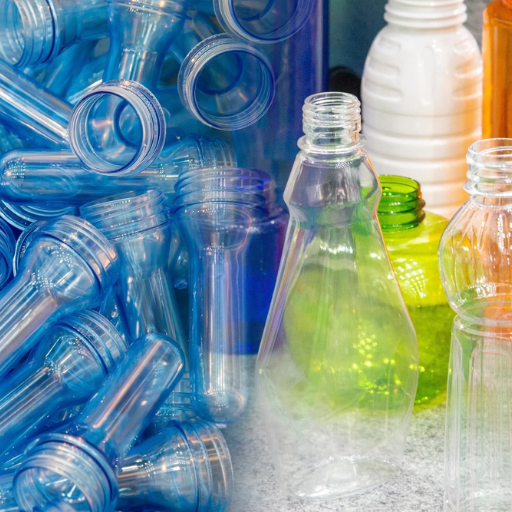
Different types of plastic are manufactured through various processes depending on their intended properties and uses. The two main categories are thermoplastics and thermosetting plastics. Thermoplastics, such as polyethylene and polypropylene, are made by polymerizing monomers like ethylene or propylene through processes like extrusion or injection molding. These plastics can be melted and reshaped multiple times. Thermosetting plastics, such as epoxy or phenolic resins, are created by combining monomers with curing agents, which causes them to harden into a permanent shape. Unlike thermoplastics, they cannot be remelted. Additives like pigments, fillers, and stabilizers are also incorporated during manufacturing to enhance properties such as strength, flexibility, or color.
The polymer science behind plastic production
Polymer science is fundamental to the production of plastics, enabling the design and development of materials with tailored properties. Plastics are primarily composed of polymers—long, chain-like molecules made from repeating units called monomers. These monomers are derived from either natural sources like cellulose or synthetic processes, most commonly using petrochemicals. The arrangement and bonding of monomers dictate the polymer’s characteristics, such as flexibility, strength, or resistance to heat and chemicals.
Two main classifications of polymers are used in plastic production: thermoplastics and thermosetting plastics. Thermoplastics, such as polyethylene and polypropylene, exhibit a linear or branched molecular structure, allowing them to be heated, reshaped, and recycled multiple times. On the other hand, thermosetting plastics, including epoxy and phenolic resins, form a cross-linked molecular structure during the curing process, rendering them irreversibly hardened and more durable.
Additives play a critical role in plastic manufacturing, enhancing the polymers’ inherent properties. For example, stabilizers improve longevity by resisting UV degradation, while plasticizers increase flexibility. Fillers and reinforcements are also added to boost mechanical strength, giving plastics the versatility to meet diverse industrial and commercial needs. By leveraging advancements in polymer science, manufacturers continue to innovate, creating sustainable and high-performance plastics for a wide array of applications.
Synthetic vs. bio-based plastics
Synthetic plastics are typically derived from non-renewable fossil fuels such as petroleum and natural gas. These plastics are known for their durability, cost-effectiveness, and adaptability, making them suitable for extensive applications, ranging from packaging to construction materials. However, their production and disposal pose significant environmental challenges, including greenhouse gas emissions and long-lasting pollution.
On the other hand, bio-based plastics are made from renewable resources like corn, sugarcane, or algae. While they offer a more sustainable alternative, not all bio-based plastics are biodegradable. Some mimic the properties of synthetic plastics and persist in the environment, while others, like polylactic acid (PLA), can degrade under specific conditions. Additionally, large-scale production of bio-based plastics raises concerns about land use and competition with food crops.
The key distinction lies in their raw materials and environmental impact. Striking a balance between performance, sustainability, and scalability remains a crucial challenge as industries work toward reducing plastic pollution and reliance on fossil fuels.
Innovations in plastic manufacturing
Recent advancements in plastic manufacturing focus on creating sustainable alternatives and enhancing recyclability. One major innovation is the development of chemical recycling technologies, which break plastics down into their original monomers. This method allows materials to be reused multiple times without degradation in quality. Companies are also exploring bio-based plastics derived from renewable sources like algae, agricultural by-products, and even captured carbon emissions. These plastics aim to reduce dependency on fossil fuels while lowering the carbon footprint.
Another breakthrough lies in the implementation of advanced polymer combinations and additives, which improve the strength, flexibility, and biodegradability of materials. Smart packaging is also gaining traction, with the introduction of self-healing, temperature-sensitive, and fully compostable plastics designed for specific applications. Furthermore, closed-loop systems are being adopted to ensure efficient collection, sorting, and remanufacturing of plastic waste, fostering a circular economy. These innovations collectively aim to address environmental challenges while maintaining the utility and performance of plastics in everyday life.
What are the properties of different plastic types?
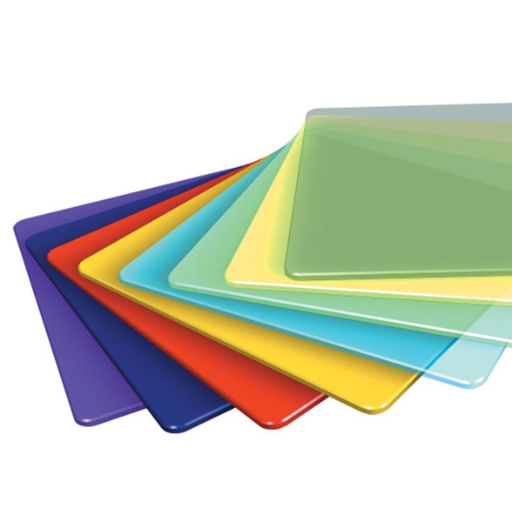
Different types of plastics exhibit a wide range of properties, making them suitable for diverse applications:
Polyethylene (PE): Known for its flexibility, durability, and resistance to moisture, polyethylene is widely used in packaging, such as plastic bags and bottles.
Polypropylene (PP): Lightweight and resistant to chemicals, heat, and fatigue, polypropylene is commonly used in food containers and automotive parts.
Polyvinyl Chloride (PVC): Strong, rigid, and durable, PVC is often used in construction materials like pipes and window frames, as well as in medical devices.
Polystyrene (PS): Lightweight with good insulating properties, polystyrene is popular in disposable food packaging and insulation panels.
Polyethylene Terephthalate (PET): Transparent, lightweight, and highly recyclable, PET is widely used for beverage bottles and food packaging.
Acrylic (PMMA): Known for its clarity and resistance to impact, acrylic is often used as a glass alternative in windows, displays, and signs.
Nylon: Strong, elastic, and abrasion-resistant, nylon is frequently used in textiles, ropes, and industrial components.
Each plastic type is tailored to specific needs based on its unique combination of physical, chemical, and thermal properties.
Rigid vs. flexible plastic materials
Rigid and flexible plastics serve distinct purposes across various industries. Rigid plastics are characterized by their solid form and structural integrity, making them ideal for creating durable products such as containers, automotive parts, and construction materials. Common examples of rigid plastics include polycarbonate, which is used in protective equipment and lenses, and polypropylene, widely found in storage boxes and medical devices.
On the other hand, flexible plastics are valued for their adaptability and lightweight nature. These materials can bend without breaking, making them suitable for products like plastic bags, shrink wraps, and flexible tubing. Polyethylene (PE) and polyvinyl chloride (PVC) are commonly used in flexible plastic applications due to their durability and versatility.
The choice between rigid and flexible plastics often depends on the specific application requirements, such as strength, flexibility, and environmental conditions. While rigid plastics offer strength and stability, flexible plastics excel in adaptability and portability, proving essential in packaging and mobility-driven products.
Heat resistance and durability of various plastics
The resistance against heat and the endurance of a plastic depend heavily on the polymer type as well as its application. For example, polycarbonate (PC) and polytetrafluoroethylene (PTFE), also referred to as Teflon, are great examples of polymers with exceptional heat resistance meant for cookware and electrical parts. Conversely, polypropylene (PP) has moderate heat resistance, which is why it’s used in microwaveable containers. With regard to durability, acrylonitrile butadiene styrene (ABS) has exceptional durability against impacts and is chosen widely for automotive and electronic casing. Depending on the application, selecting a plastic material requires balancing heat with the strength and flexibility needed for the use.
Chemical resistance and safety considerations
When evaluating plastics for chemical resistance, it is crucial to understand their compatibility with various substances. For example, polyethylene (PE) and polypropylene (PP) exhibit excellent resistance to acids, alkalis, and organic solvents, which makes them widely used in chemical storage and piping systems. Conversely, plastics like polystyrene (PS) and acrylic tend to perform poorly when exposed to harsh chemicals, limiting their use in such environments.
Safety considerations are equally important, particularly in applications involving food contact or medical use. Plastics such as polyethylene terephthalate (PET) and high-density polyethylene (HDPE) are FDA-approved and commonly used in food containers and packaging due to their stability and non-reactive properties. However, it is vital to examine the potential for leaching of additives or degradation products. For example, avoiding prolonged exposure of plastics to extreme temperatures or reactive chemical agents can help mitigate risks.
Ultimately, understanding a plastic’s chemical resistance and ensuring compliance with safety standards like FDA, REACH, or RoHS are essential steps in selecting the appropriate material for a given application.
How do different plastic types impact the plastic industry?
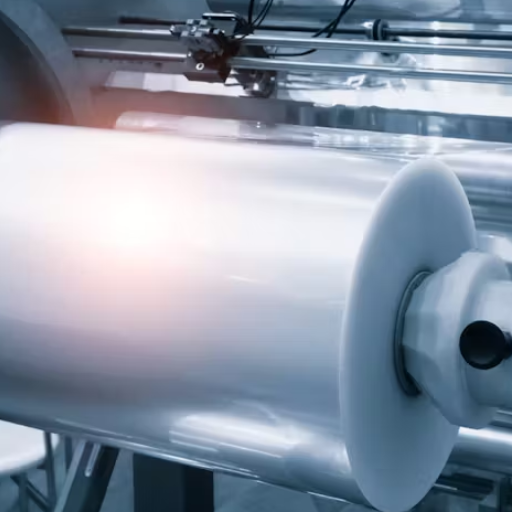
The various categories of plastic fundamentally inform the impact, innovation, application, and sustainability work within the industries. Thermoplastics like polyethylene (PE) and polypropylene (PP) for example, capture the vast majority of market share because they are versatile, inexpensive, and easily recyclable. They are essential in packaging, automotive, and consumer goods. Conversely, some thermosetting plastics, like epoxy resins, have exceptional durability and are widely adopted within the construction and electronics industries. Moreover, the introduction of biodegradable and bio-based plastics is encouraging the plastic industry to adopt green strategies in response to environmental policies. Each type’s characteristics and constraints of each type inform their use and guide the manufacturing processes, market approaches, and compliance with laws and regulations.
Market demand for specific plastic materials
Market demand for plastic materials is influenced by factors such as industrial applications, environmental regulations, and consumer preferences. Polyethylene (PE) and polypropylene (PP) continue to lead in demand due to their widespread use in packaging, household goods, and industrial applications, thanks to their cost-effectiveness and durability. Polyethylene terephthalate (PET), commonly used in bottles and textiles, is experiencing sustained growth due to increasing recycling infrastructure and its lightweight properties. High-performance plastics, like polycarbonate (PC) and acrylonitrile-butadiene-styrene (ABS), are in steady demand for sectors including automotive and electronics, where durability and thermal resistance are critical. Additionally, the rise of biodegradable and compostable plastics, such as polylactic acid (PLA), reflects a growing consumer and regulatory push towards sustainability, with industries adapting to greener alternatives in response to this shift.
Trends in plastic production and consumption
The global plastic industry is undergoing significant transformation driven by innovation, regulations, and sustainability goals. One prominent trend is the increasing emphasis on circular economy practices, with a focus on recycling and reusability to minimize environmental impact. Mechanical and chemical recycling technologies are advancing rapidly, enabling more efficient processing of post-consumer and industrial plastic waste.
Demand for bioplastics is also on the rise, fueled by environmental awareness and legislation aimed at reducing dependency on fossil-based materials. Materials like polylactic acid (PLA), polyhydroxyalkanoates (PHA), and starch blends are gaining traction in packaging, agriculture, and medical applications due to their compostable and renewable nature.
Industries are also shifting toward lightweighting in manufacturing, particularly in automotive, aerospace, and consumer goods, to reduce material use and carbon emissions. Furthermore, regional policy developments, such as the European Green Deal and bans on single-use plastics, are shaping production patterns and pushing companies to adopt eco-friendly alternatives.
Finally, technological innovations in smart and multifunctional plastics, such as self-healing or conductive materials, are broadening the application scope for plastics in high-tech industries, including medical devices, electronics, and energy storage systems. These trends collectively highlight the industry’s adaptive strategies to balance functionality, cost efficiency, and sustainability.
Future outlook for the plastic industry
The future of the plastic industry is set to be defined by sustainability, innovation, and regulatory adaptation. Advances in recycling technologies, such as chemical recycling and circular economy initiatives, are expected to play a pivotal role in addressing plastic waste. These methods promise to efficiently break down plastics into their fundamental components, enabling continuous reuse and reducing dependence on virgin materials.
At the same time, biodegradable and bio-based plastics are anticipated to gain further momentum as industries prioritize eco-friendly materials to meet consumer and regulatory demands. Ongoing research into alternative feedstocks, like algae and agricultural byproducts, aims to scale sustainable production processes while minimizing environmental impact.
Additionally, the integration of smart technologies, including AI and IoT, in plastic manufacturing is predicted to optimize efficiency and reduce resource consumption. Coupled with stringent government policies, such as extended producer responsibility (EPR) frameworks, the industry is likely to pivot towards greener, more innovative approaches. With growing public consciousness around environmental issues driving industry transformation, a balance between performance, cost, and sustainability will remain a core priority in shaping the global trajectory of the plastic sector.
References
Frequently Asked Questions (FAQ)
Q: What are the seven different types of plastic?
A: The seven different types of plastic include Polyethylene Terephthalate (PET or PETE), High-Density Polyethylene (HDPE), Polyvinyl Chloride (PVC), Low-Density Polyethylene (LDPE), Polypropylene (PP), Polystyrene (PS), and Other, which includes plastics like Polycarbonate and engineering plastics.
Q: What is the most common type of plastic used in plastic bottles?
A: The most common type of plastic used in plastic bottles is Polyethylene Terephthalate (PET). It is lightweight, strong, and often used for beverages and food packaging.
Q: Can all types of plastic be recycled?
A: Not all types of plastic can be recycled. While many common plastic types such as PET and HDPE are widely accepted in recycling programs, certain types like PVC and Polystyrene are less commonly recycled due to technical and economic challenges.
Q: What is HDPE plastic and where is it commonly used?
A: HDPE, or High-Density Polyethylene, is a strong and versatile plastic commonly used for milk jugs, detergent bottles, and plastic bags. It is known for its high strength-to-density ratio.
Q: Why is PVC considered a problematic plastic for recycling?
A: PVC, or Polyvinyl Chloride, is considered problematic for recycling because it contains numerous additives and can release harmful chemicals when processed. This makes it less desirable in plastic recycling programs.
Q: What are plastic alternatives and why are they important?
A: Plastic alternatives are materials used to replace traditional plastics, such as bioplastics, glass, metal, and paper. They are important because they can reduce environmental impact and help address issues associated with plastic pollution.
Q: How is Polyethylene Terephthalate (PET) different from other plastics?
A: Polyethylene Terephthalate (PET) is different from other plastics due to its clarity, strength, and barrier properties. It is commonly used for food and beverage containers and is one of the most recycled plastics in the world.
Q: What is the significance of the number 7 in plastic labeling?
A: The number 7 in plastic labeling refers to the category “Other,” which includes various types of plastics that don’t fit into the first six categories, such as polycarbonate and certain types of bioplastics. These plastics are often more difficult to recycle.
Q: Are there any plastics that don’t fall under the recycling categories 1-6?
A: Yes, plastics that don’t fall under the recycling categories 1-6 are labeled as number 7, which includes mixed or other plastics. These plastics are less commonly recycled due to their varied compositions.

